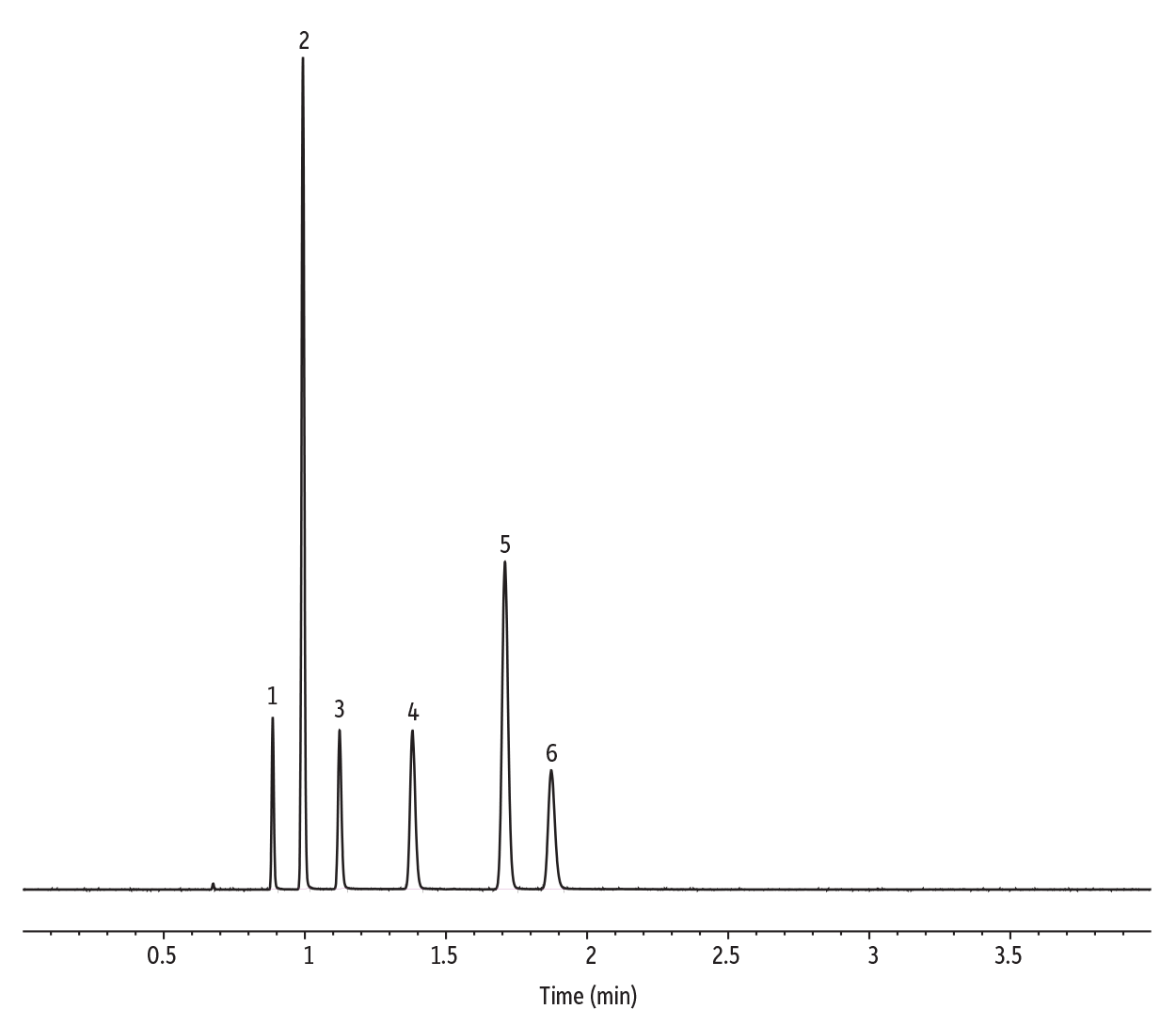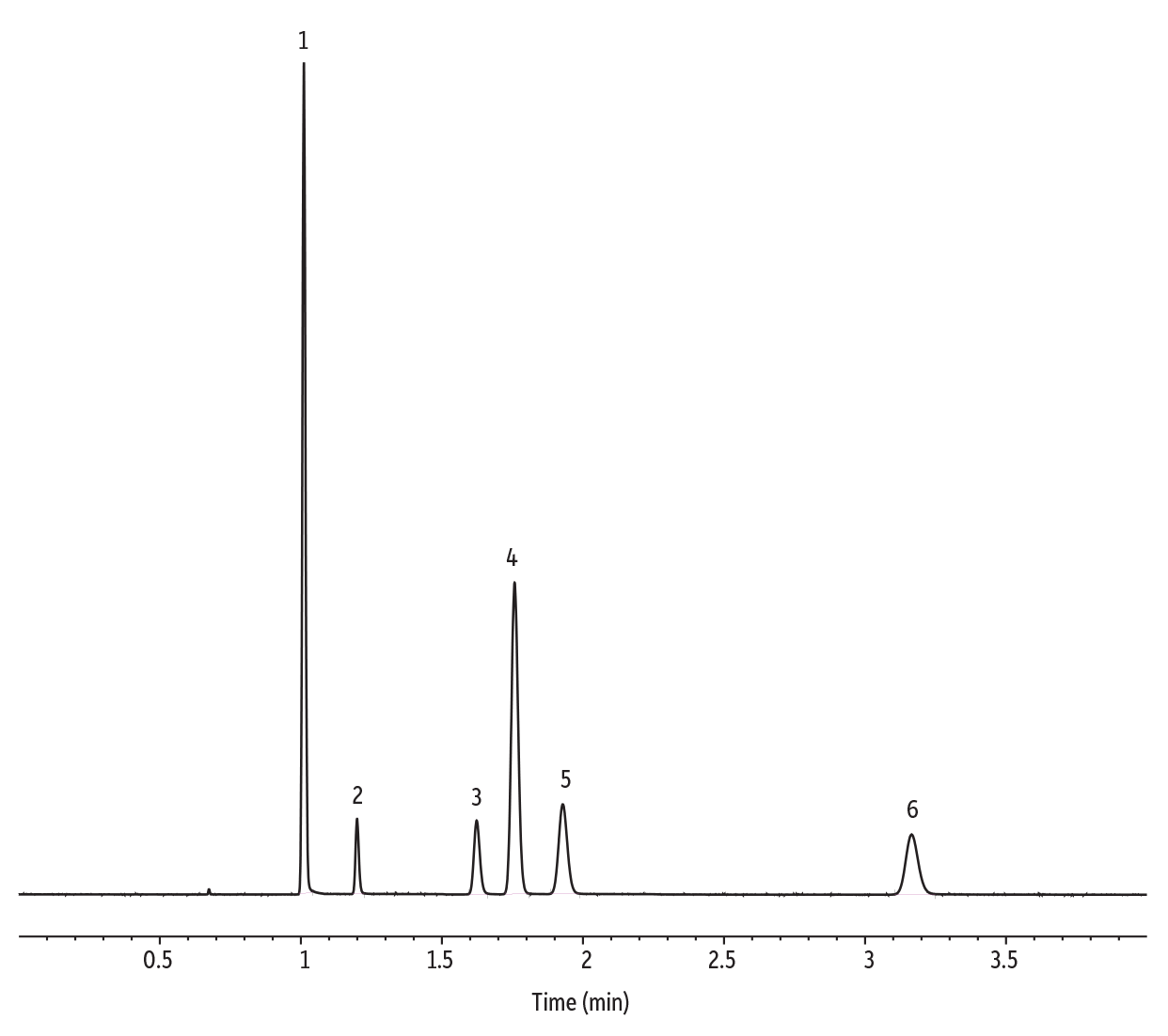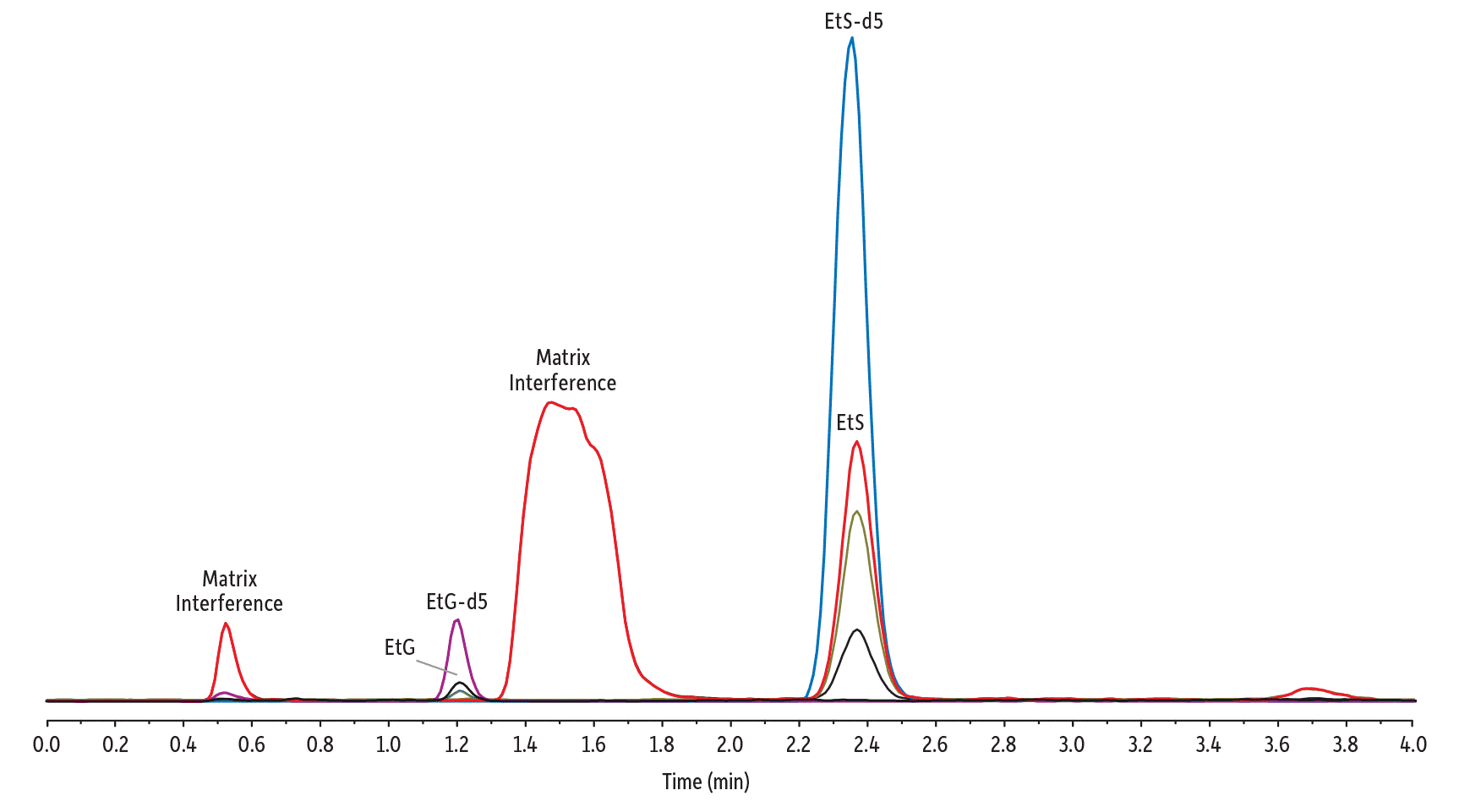Simplify Alcohol Analyses with Application-Designed Chromatography Columns
On the surface, alcohol analyses appear relatively straightforward. They involve few target analytes, are not extremely sensitive, and have quick sample preparation. However, they are not as simple as they seem. Ethanol analyses present distinct chromatography challenges when assaying in biological samples. Compounds found in biological matrices can interfere with the identification and quantitation of ethanol and its associated analytes.
Restek has developed tailored columns to address the common analyte interferences that can hinder productive chromatography. Dual capillary column sets for GC are available for common blood alcohol analyses, and high-throughput analytical LC column and guard cartridges are available for urinary alcohol assays. Starting method development with tailored columns designed specifically to lessen interferences can help labs develop methods faster and keep instruments running.
Blood Alcohol Content (BAC)
Gas chromatography coupled with headspace sampling and a flame ionization detector (HS-GC-FID) is the most commonly used technique for the analysis of blood alcohol in biological specimens from both living and dead persons. HS-GC-FID is remarkedly simple, reliable, and linear over the analytical range needed for the quantitative detection of alcohol. The troublesome part of the chromatographic analysis is ensuring analyte specificity from endogenous compounds. This is extremely important when analyzing postmortem samples due to the risk that fermentation or putrefaction may produce volatile chemical byproducts that can interfere with the analysis. For this reason, it is always recommended to use a dual column method. By splitting the sample after the injection port and analyzing it simultaneously on two different stationary phases, we can both quantify and confirm the analyte's identity in a single run (Figure 1). The target analytes will elute in the calibrated retention time window on both columns, thus confirming a positive identification. To simplify column selection, Restek has paired two distinct sets of column phases: Rtx-BAC1 and Rtx-BAC2 columns and Rtx-BAC Plus 1 and Rtx-BAC Plus 2 columns for in vivo and postmortem analysis.
Figure 1: HS-GC-FID dual column setup is common for BAC testing.
Rtx-BAC1 and Rtx-BAC2 columns are designed for routine in vivo blood alcohol analyses (Figure 2). This column pair has been in use for decades and has proven to provide stable, defensible results for routine BAC testing. When using n-propanol as the internal standard, this is the industry standard.
Figure 2: The industry standard for in vivo BAC analysis is the Rtx-BAC1 and Rtx-BAC2 column set.
BAC Resolution Control Standard with n-Propanol on Rtx-BAC1 Column
BAC Resolution Control Standard with n-Propanol on Rtx-BAC2 Column
For labs looking to expand their HS-GC-FID platform beyond routine in vivo BAC testing, the Rtx-BAC Plus 1 and Rtx-BAC Plus 2 column set is a more suitable option. When analyzing postmortem blood alcohol, t-butanol is often used as the internal standard instead of n-propanol. N-propanol can be created by putrefaction, which can alter quantitation. When the internal standard, which exists to stabilize quantitation, is erroneously high, the results will lose accuracy. The Rtx-BAC Plus 1 and Rtx-BAC Plus 2 columns were designed to fully resolve the alternate internal standard, t-butanol, making it amenable to a fast, two-minute postmortem BAC analysis (Figure 3). With this column set, GC-FID workflows can also be expanded to include inhalants, glycols and GHB.
Figure 3: The Rtx-BAC Plus 1 and Rtx-BAC Plus 2 column set was designed to resolve the alternative internal standard, t-butanol, for postmortem BAC analysis.
BAC Resolution Control Standard with t-Butanol on Rtx-BAC Plus 1 Column
BAC Resolution Control Standard with t-Butanol on Rtx-BAC Plus 2 Column
Urinary Alcohol Metabolites
When ethanol metabolites are being monitored in urine, which is commonly performed in treatment programs, high-throughput LC-MS/MS methods are employed. This technique is highly sensitive and fast. Since mass spectrometry is being used, analyte identification is not as significant a concern compared to when GC-FID is used. However, matrix interferences are still problematic during chromatographic assays. The presence of ethanol is determined using two urinary metabolites—ethyl glucuronide and ethyl sulfate. These analytes are highly water-soluble and, therefore, can be difficult to retain using traditional reversed-phase columns. Because of the inherent variability of urine samples and the common presence of early eluting matrix components, not retaining the target analytes beyond the zone of matrix interferences can cause ionization suppression, resulting in low sensitivity and problematic quantitation. Restek has developed a novel stationary phase to retain and separate the polar analytes EtG and EtS from common urine matrix interferences. As part of our Raptor column line, the Raptor EtG/EtS LC column features an SPP particle for improved cycle times and stability. It effectively separates EtG and EtS from potentially interfering matrix, ensuring sensitivity and accurate quantitation, in a fast, four-minute analysis.
Figure 4: The Raptor EtG/EtS column has the retention needed to separate ethanol metabolites from common matrix interference.






